Ursine
Photographer Jill Greenberg distorts, caricatures, and cartoons the face of the growling grizzly and the crying child.

First, the bears. Where did they come from and how did they end up in your photographs?
They are all “working bears.” They’re animal actors. I have to go to Calgary where there are these “close contact” bears—Kodiak bears and black bears. I set up a studio outside. I also did the same thing in Vancouver when I found a working polar bear. Continue reading ↓
“Ursine” is on view at ClampArt in New York City through Nov. 24 along with Jill Greenberg’s “End Times” photographs. She will also be part of the group show “Empty Nest,” opening Nov. 1 at Nathan Bernstein gallery in New York City. All images courtesy of Clampart. All images © Jill Greenberg, all rights reserved.
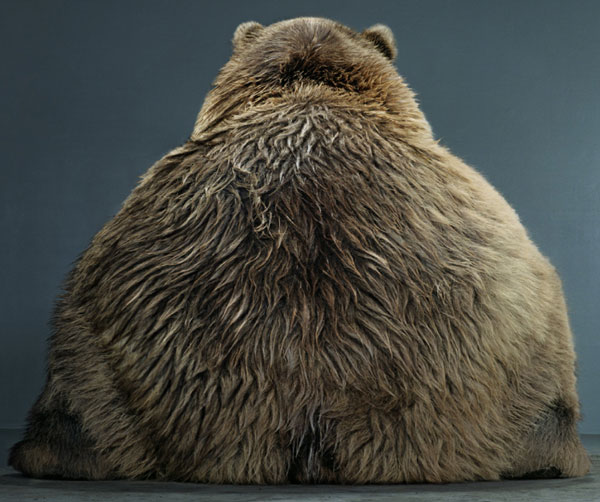
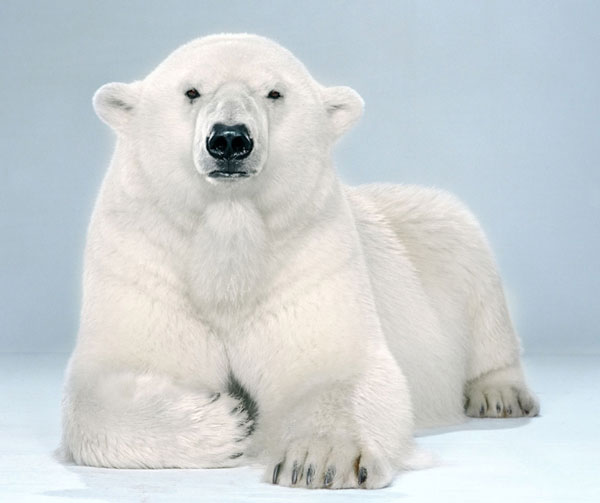
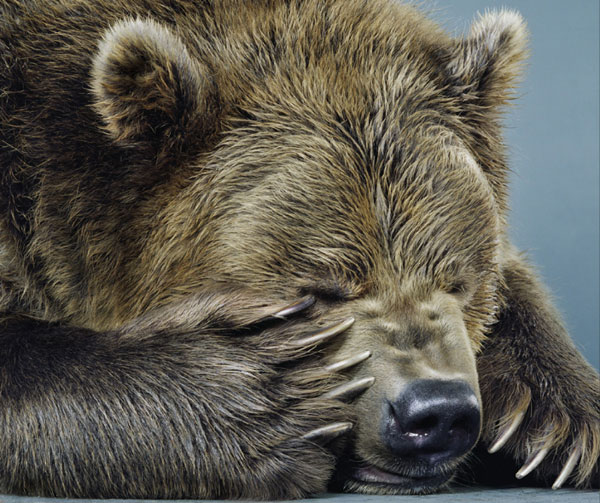
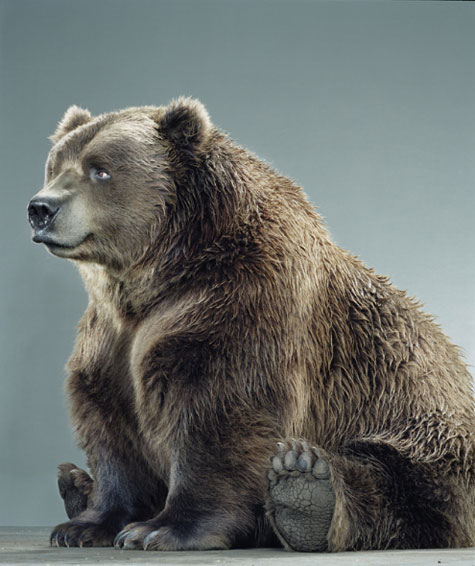
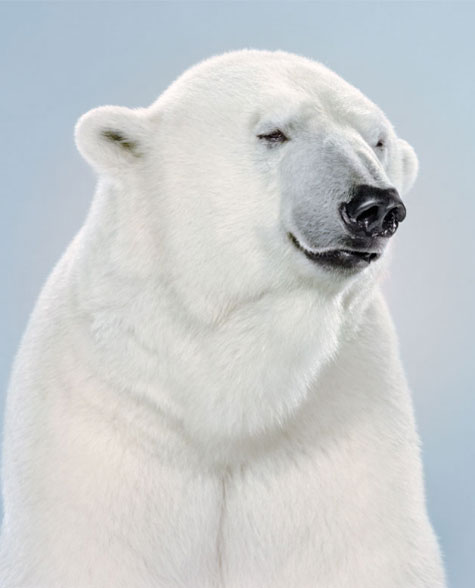
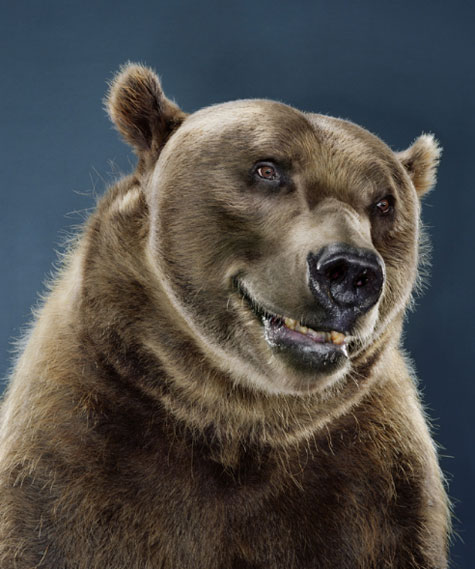
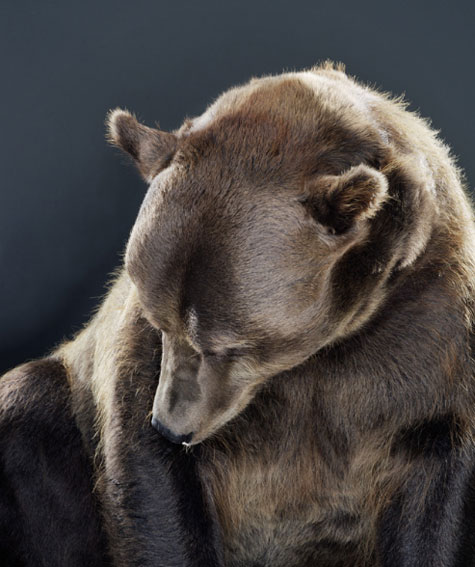
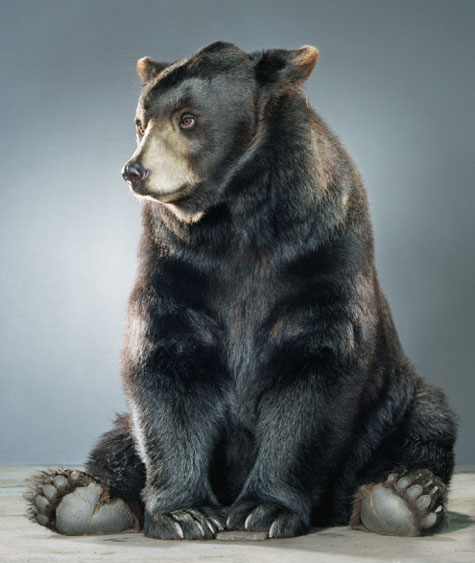
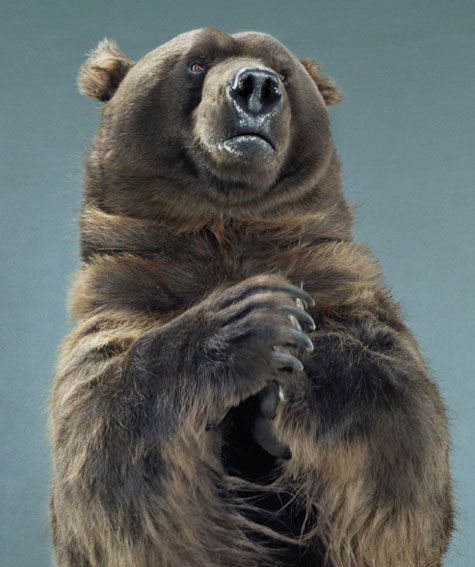
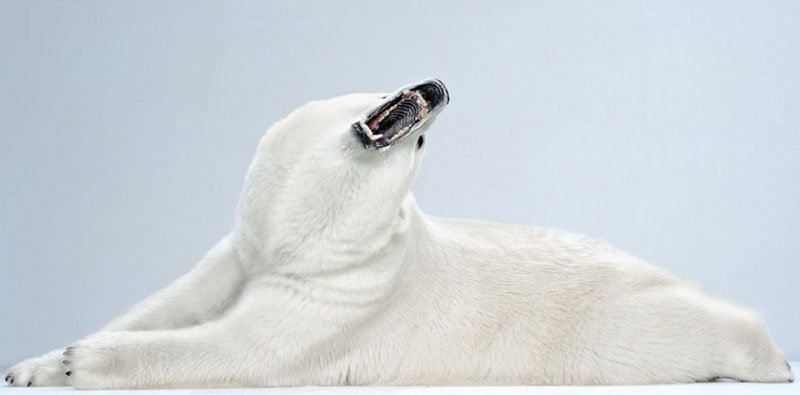
Interview continued
You shot monkeys in this style, then crying children, and then bears. Who’s easiest to work with?
They’re all really hard to work with. I have no idea why. Children might be easier, but they’re more taxing psychically. At the end of a day of shooting I’d think, “I don’t want to do this anymore.” It’s all hard work, physically hard work sometimes, but kids were easier because you didn’t have to worry about them eating you or attacking.
Were there any surprisingly similarities or differences between shooting monkeys, bears, or children?
It’s all the same set-up for the shoot. It’s all the same lighting set-up. When I first started shooting children my mother said, “Oh you’re making them look like your monkeys,” because there are pictures of the kids screaming with their mouths open. I joke that none of them are consenting adults. They’re either animal actors or children that are being wrangled by their parents. I did a new series of actual adults that I’ve shot and that I’m retouching. I’m deciding if I like it or if I need to reshoot it.
Is shooting consenting adults a big change from photographing children and animals?
I like working with animals and children because it’s hard to get the innocent emotion with adults. Adults have more hang-ups. The behavior might be more artificial. When animals or children are going to make a face and show an emotion, it’s a deep-down, honest emotion. And then, of course, I make the photograph seem totally dishonest by putting it in an artificial setting. I take them out of their natural environments.
How did you decide to shoot these animals in a studio setting?
I didn’t even think about it, in a way. That’s what I’ve been doing forever with people. I like that structure where the subject is the star of the picture. The first monkey I shot was an accident. I was doing a job where I had this monkey on set and I shot him on scene just for myself. Then I thought, “Oh, this looks like something I’ve never seen before—a studio portrait of a monkey.” I decided to do more.
So the monkey portraits seemed like a natural evolution of your work?
Recently, I’ve been thinking about when I used to draw doodles and sketches. I’d draw all these crazy characters: animals with clothes on, combined animals, people with strange expressions. Animals and people were on the same level. I hadn’t realized [until recently] that that was a theme running through my work from a young age. My drawing styles were pretty cartoon-y.
I like the idea of bringing your character out through photographs.
I think it’s interesting that you can look at someone’s work and know who the photographer is because he or she is projecting his or her own personality onto the subject. I think that is much more the case than when someone says, “Oh, this is an honest portrait of so-and-so.” I tend to think that photographers photograph things the way they see them or the way they want them to be. I see animals as funny characters. With the children, it’s a little different because there’s heightened emotion. I gravitate toward strong emotion and feeling.
What kinds of characters or personality did you see in the bears?
What’s interesting about the bears is that they’re trained to stand up and growl and look really scary and menacing, but when they’re doing it they’re totally silent. They’re just silently acting like scary grizzly bears. When I was shooting the bears, I was surprised that they’d often pose like cuddly teddy bears. I thought that was really cute and I liked the dichotomy between the two ways the bears could be. Their faces are so mushy. They can look like a growling bear at one moment and then a cuddly bear a moment later. Just like the monkeys and the apes, the bears are trained to work for food.
What attracted you to bears specifically?
After my “End Times” series, with children crying, I wanted to do more work with children, but I needed to take a break because I’d gotten such crazy backlash from people who think it’s a scandal that children cry.
I wanted to you ask you about that.
You know, children cry. My daughter was crying because she couldn’t wear tights under her pants when it was 80 degrees out. So, I joked that I was going to shoot grizzly bears because they’re safer than bloggers.
Has the controversy affected what you’ve done since?
It has. The controversy and all the internet nonsense affected me, because how could it not? I think that the photos of bears growling represent the randomly misguided rage that came at me.
But, in the future, you’d like to do more work with children?
I have children and I’m around children all the time. I’m still taking pictures of them. I have another series called “Performance” that will be shown in December in Los Angeles with the bear photos.
